Almost as high as flying…
A German version of this posting you can find here.
Eine deutsche Version dieses Artikels finden Sie hier.
Three quarters of a year ago, the Tōkyō Skytree, with a total height of 634 meters the highest tower of the world (and, after the Burj Kalif in Dubai the second tallest building), was made accessible to the public (also have a look a my previous posting “Tōkyō Skytree (東京スカイツリー) – When high isn’t high enough any more…. “). During the first months after opening, only pre-purchased where available – or rather not available, as they were sold out faster than one could click the website. Some hotels were granted an allotment of tickets, that helped tempting the customers to stay overnight and get hold of a Skytree-ticket at the same time. Since July 2012 tickets are also being sold at the box offices of the Skytree itself.
Finally, on February 25th 2013, I also decided to join the flock of other visitors. The time between late autumn and late winter is the best to enjoy views over the city, as they bring quite a number of clear and sunny days.
To mention it upfront: Obviously, you still need an ample amount of time and patience to visit the observation decks of the Skytree. The site still “suffers” quite some congestion – even the most optimistic planning of visitor numbers has long been exceeded. I don’t want to go as far as calling the Skytree a “cash machine”, but it’s certainly also no financial burden to its owner.
Be that as it may: Even if you have to queue up for a little while longer: on a clear it’s certainly worth the effort. As always in Japan, you can rely on the fact that even the greatest masses of people are being handled smoothly and in the most civilized manner. The two entrance halls on the 4th floor of the tower building have no problem accommodating 2,000 people or more. If both are filled to capacity, calculate queue times of 80 to 90 minutes. We were also “calculating” – and waited accordingly… If you have problems standing for such a long period of time, you should consider buying your ticket online in advance (have a look at this part of the Tōkyō Skytree’s website – unfortunately in Japanese only). But apart from that, the long idle time isn’t that boring, because there is an exhibition of “Skytree art” in the northern entrance hall which is rather interesting. It displays Skytree impressions created by means of traditional handicraft.
In the main entrance hall you are being entertained by large video screens showing interesting details about the Skytree itself and the area surrounding it.
Once you have purchased your ticket for the way up to the “Floor 350” (i.e., the top one of the three floors of the lower observation deck, called “Tōkyō Skytree Tembo Deck”, high above in 350 meters height) you are on the fast lane. The elevators shoot up in wind’s speed of 36 km/h (even though that’s slower than in the „Landmark Tower“ in Yokohama, it’s still breathtaking – but you may feel the speed only in your ears, not in your bones….).
Just in case you wonder: “Tembo” stands for the Japanese word “展望 / てんぼう” and means “view”.
Already here, at 350 meters height, the city is practically at your feet – in the truest sense of the word, as the angular windows allow you enjoy a vertical view to the buildings below the tower (if you are brave enough and free from giddiness). On a clear day your view is not restricted to the city limits – it’s only blocked by the mountains in the west and northwest and goes beyond Yokohama in the south and the Tōkyō Bay. And on the not-so-few very clear days you can also see Mount Fuji.
Here, on the “Floor 350” you’ll also find a “Skytree Café”. One floor lower, on the “Floor 345”, there is the “Skytree Shop” and the “Skytree Restaurant 634 (musashi)”.
And that’s probably a good point to share one (possible) explanatino of the height of the tower with you:
The area which is now covered by the capital prefecture of Tōkyō was called “Musashi-no kuni” in the old days. Phonetically, one can understand this “mu-sa-shi” also as “six-three-four”. That’s why the total height of the tower takes reference to the name of the old province. It is said… Furthermore, also the Name of the owner of the Skytree the Tōbu (東武) Railroad Company retains one of the Japanese characters of “Musashi” (武蔵) in its name.
Another floor lower, on the “Floor 340” you can also relax at yet another “Skytree Café”, or -provided you are even braver than those who manage a vertical view through the main windows – to step on a window in the floor of the deck. It may be a matter of perception, but I thought the respective installation at the lowest observation deck of the dizzying, despite that fact that it is 200 meters lower there.
Of course, many of the visitors may feel compelled to also visit the top observation decks of the “Tōkyō Skytree Tembo Galeria” – with a height of 451.2 meters (at the “Sorakara Point”) they are the third highest observation decks of the world. Only the Burj Kalifa in Dubai (observation deck in 452 meters height) and the Shanghai World Financial Center (observation deck in 474 meters height) offer an even higher view, but I have my doubts whether their view can really compete with what you can see here at the Skytree (but, naturally, that may be a matter of taste).
If you think top ranks are essential, you can preen yourself with the fact that the Skytree is the highest tower in the world and that you are standing on the worlds highest observation deck of a tower.
But these numbers and ranks are all hollow words, once you are up there! I am not of the opinion that the view is considerably more fascinating from 450 meters than it was already on 100 meters lower, but the “place” itself is worth the ascend. The “Tōkyō Skytree Tembo Galeria” winds itself up from 445 meters to 450 meters in a glass pipe at the outside of the tower – the 110 meters long “Air Walk”. It sure helps, if you are not afraid of heights here…
But words are a inadequate vehicle to describe what it means to visit the Tōkyō Skytree – even the few pictures I have selected for illustration may only give you a insufficient impression of the spectacular views.
It still may be a matter of taste, if you like the more central view from the Tōkyō Tower or, e.g. from Roppongi Hills better and think they are more “interesting” that the ones from the more peripherally located Tōkyō Skytree. I, personally, haven’t abandoned my favour for the Tōkyō Tower, but I have added some new aspects.
For all those who may worry about the sturdiness of the tower: The two-fold construction of a sturdy center column at the core and a steel-frame tower body around it is deemed extremely robust and reduces any swaying during strong winds and earthquakes. That may look extremely modern, but in fact it’s nothing else but the implementation of centuries of expertise in the construction of pagodas – with new means. The basic principle of an old pagoda and the Skytree is intriguingly similar.
After your visit to the Tōkyō Skytree also have a look at the restaurant and shopping arcades at the “Solamachi” – the large complex of buildings at the feet of the tower.
How to get there?
The stations „Oshiage Skytree“ (押上スカイツリー / おしあげスカイツリー) or “Tōkyō Skytree” respectively are being approached by four railway lines:
- Tōkyō Metro Hanzōmon line (東京メトロ半蔵門線 / とうきょうメトロはんぞうもんせん)
- Toei Asakusa line (都営浅草線 / とえいあさくさせん)
- Tōbu Skytree line (東武スカイツリー線 / とうぶスカイツリーせん)
- Keisei Oshiage line (京成押上線 /けいせいおしあげせん )
Opening hours:
Daily from 8 am to 10 pm (for regular tickets bought on the same day; may be changed on short term notice due to congestion or other influences) – last entry: 9 pm
Ticket sale (as per October 1,2019):
- Children aged 5 years or under are free.
- Rates in ( ) parentheses are for visitors with disabilities. Please present a disability ID card or other ID for verification.
- There are no disability discounts available for Fast Skytree Ticket.
- During busy periods, the sale of combo tickets may be suspended if there are long queues.
- Please refer to the pricing calendar as ticket prices may vary depending on the day.
If you think the prices are rather steep, think about it this way: Converted into meters of height, the Tōkyō Skytree isn’t more expensive than the Tōkyō Tower…
The prices stated above are for tickets bought for same-day-use at the Tōkyō Skytree’s ticket counter. The Tōkyō Skytree also offers such a large variety of advance and special tickets (also for foreign visitors) that it would be virtually impossible to keep track of them all here. For further details, please check the Tōkyō Skytree’s website – and don’t be too hard with yourself should you find the information given there rather confusing (at least in parts).
Also have a lock at:
Tōkyō Sky Tree (東京スカイツリー)
– When high isn’t high enough any more…
Yokohama Landmark Tower (横浜ランドマークタワー)
– Japan’s (still) tallest skyscraper
Roppongi Hills Sky Deck (Bilder/Pictures)
– Closer to heaven – a panorama of the city
Tōkyō bei Nacht / Tōkyō at Night (Engl./dt.)
– Seen from the Tōkyō Tower (東京タワー)
Tōkyō – einst & jetzt / before & after (Engl./dt.)
– A prospering city

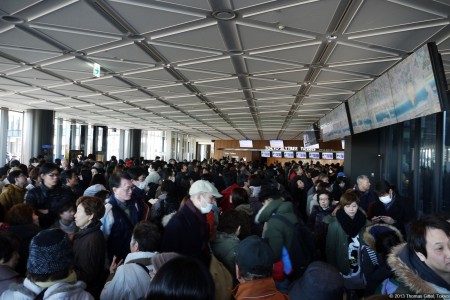
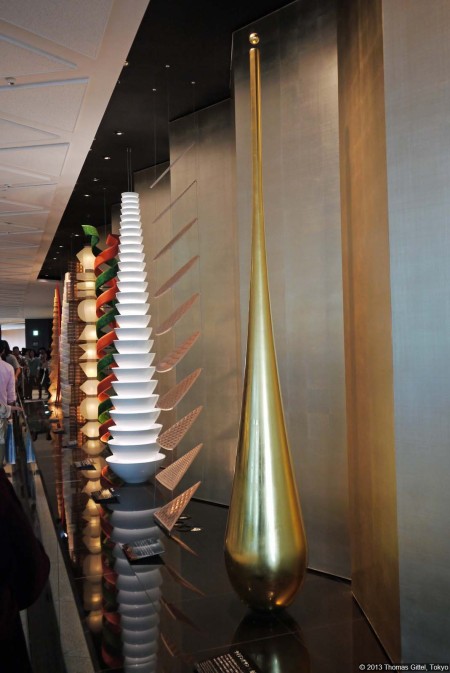
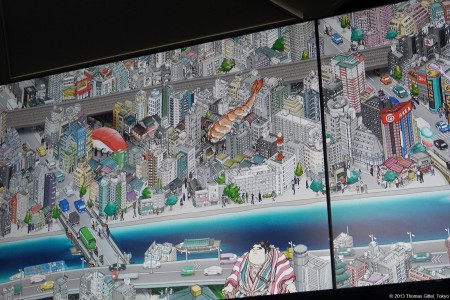
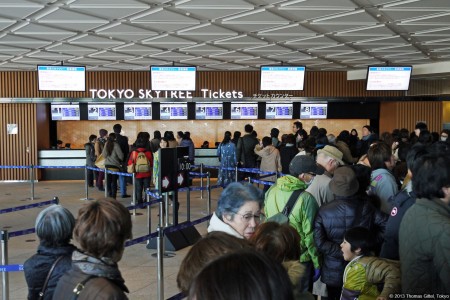
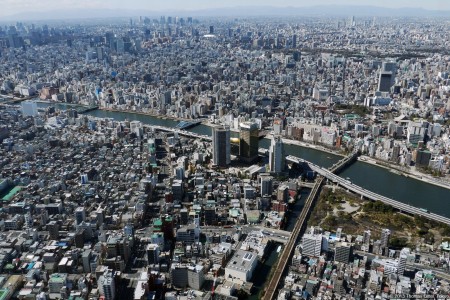
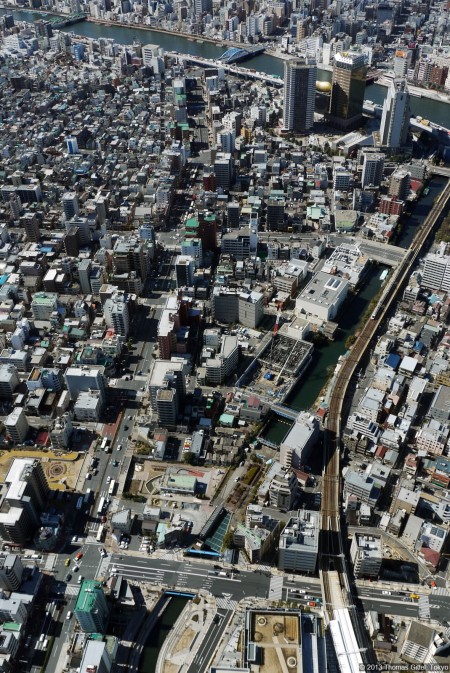
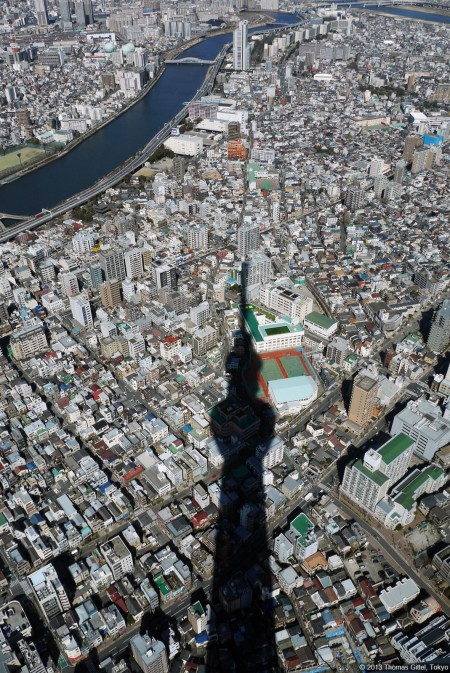
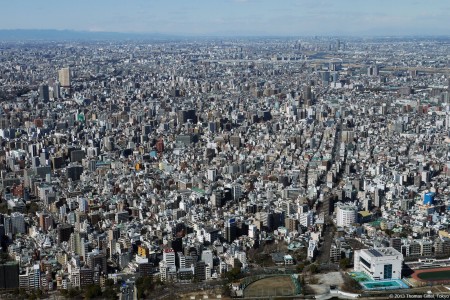
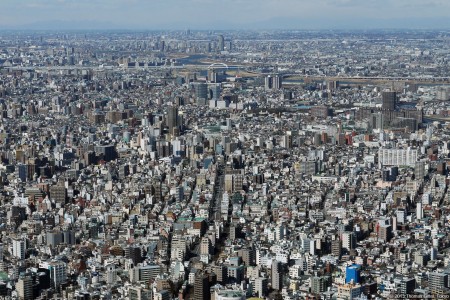
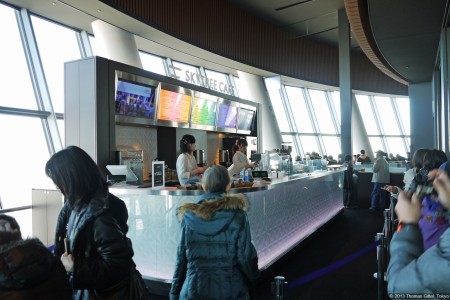
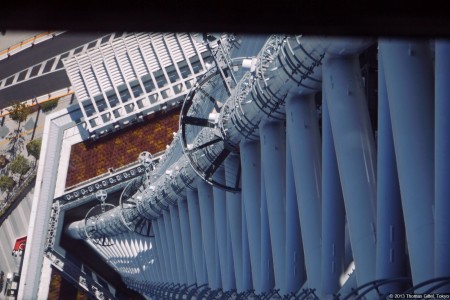
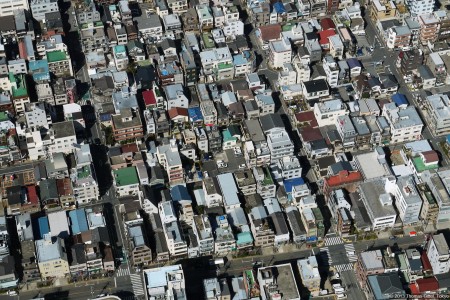
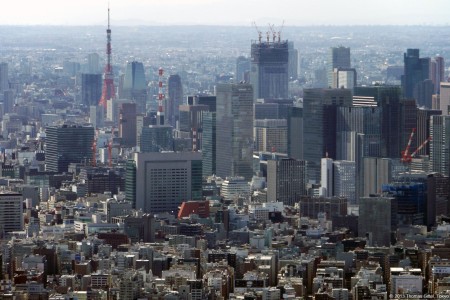
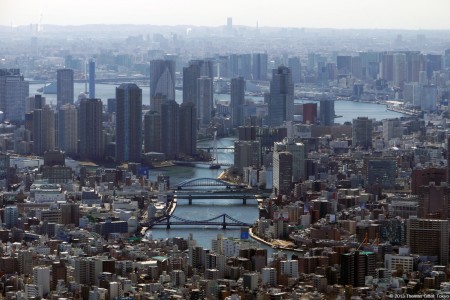
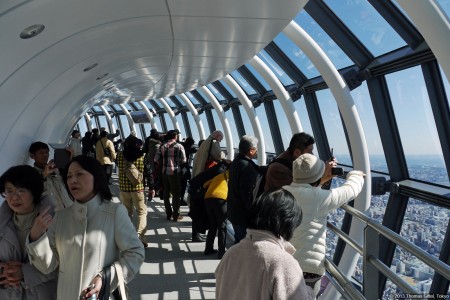
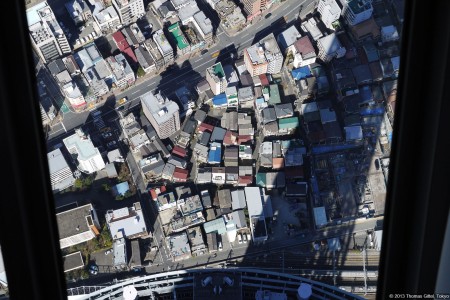
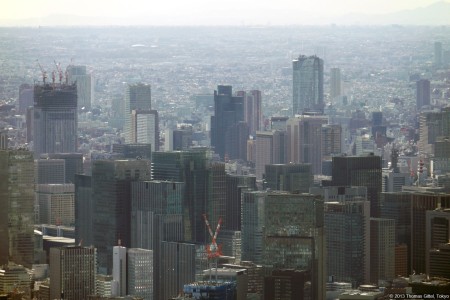
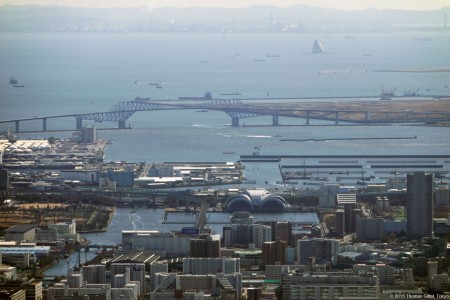
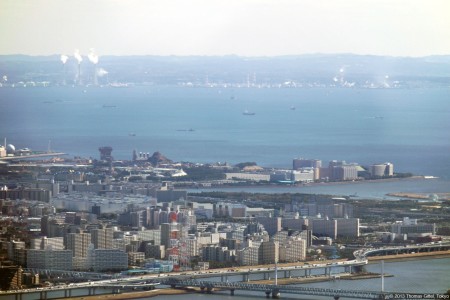
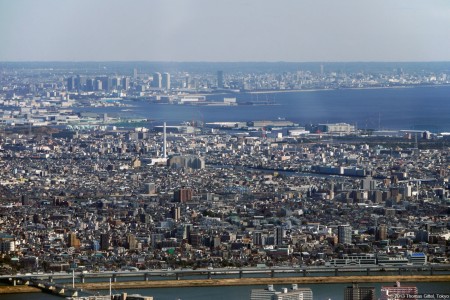
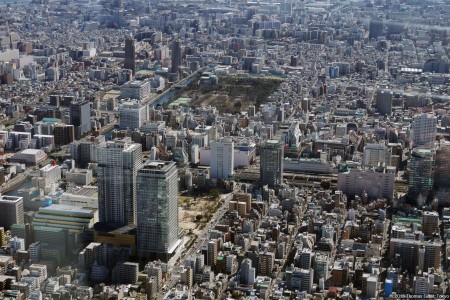
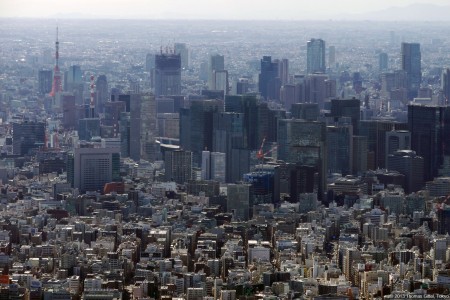
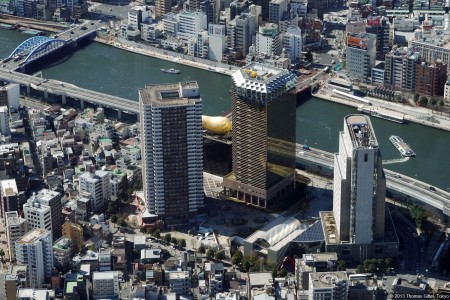
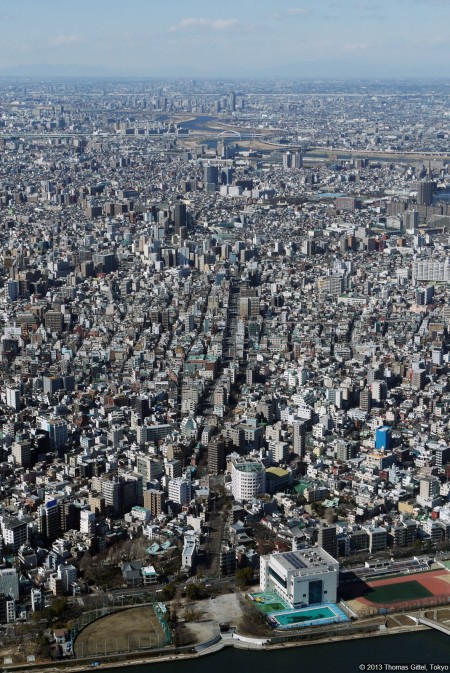
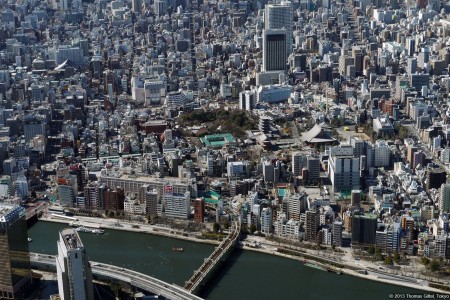
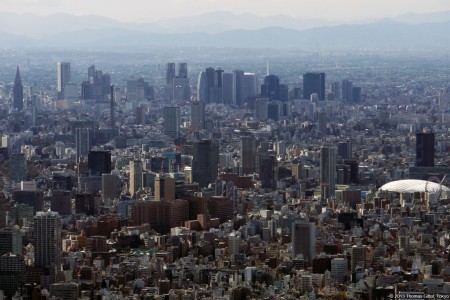
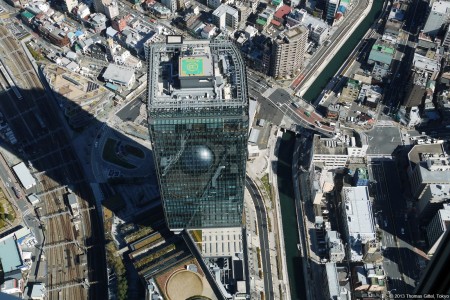




 Posted by Thomas Gittel
Posted by Thomas Gittel